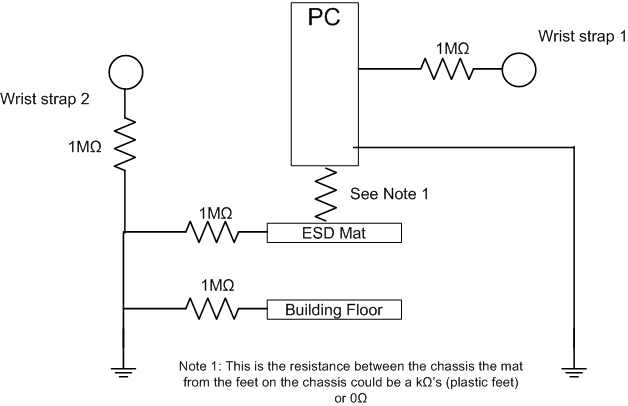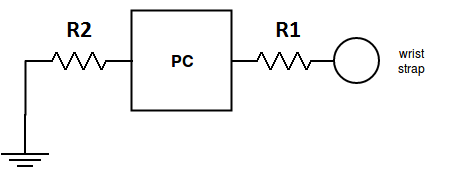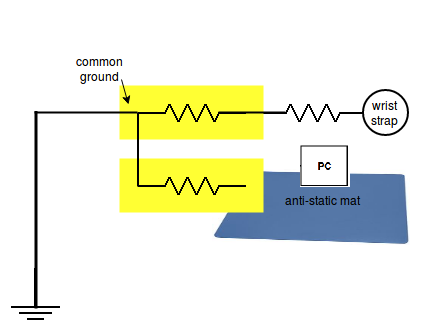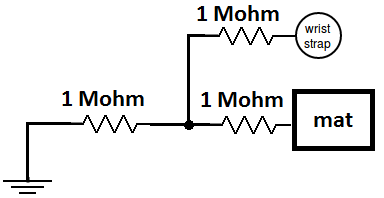If by plan B you mean to add a resistor to the mains ground, then no plan B is not an option. If you add a resistor in series you will have two problems:
1) It affects the saftey of the earth mains, if you size the resistor wrong in the event of a fault you could have an issue with the resistor blowing out or creating common mode voltage in the case
2) You create common mode voltages and cause the whole chassis ground to bounce depending on the amount of current flowing throw chassis ground which could cause problems for the supply and circuitry (if your ground bounces up and down by 10's of mV it might create digital noise, which could be possible depending on the resistor on earth ground.) You would also increase the potential between the PC and other devices creating noise problems.
You can put resistances in series with the wrist strap and the anti static mat, but not the PC. Anti static mats (all the mats I've seen already have MΩ's of resistance in the mat material itself. Most wrist straps also have a 1MegΩ resistor built in.
If your not playing around with anything over 30V you probably don't need to worry about any of this anyway. Keep the mains ground as low resistance as possible as required, and put resistors (that are probably already there, you can tell with a good DMM (voltmeter)) in between the mat and ground and the strap and ground. Shown here:

If look at this question the diagram would look like this, the grounds would be connected in the building wiring:

In the above image the wrist strap is connected to the mat, if it's the kind with a 1MΩ resistor in it, it doesn't matter where you connect it, if you connect it to the chassis (shown as wrist strap1) , it still gets grounded. If you connect the wrist strap to the mat it gets grounded, and if you connected it to the mats ground (shown as wrist strap2) it still gets connected, each time with at least 1MΩ to ground or any other potential that might affect those who might grab onto earth mains. If you take a 1MΩ resistor and poke it into an electrical outlet it's not going to kill you, but a fork might.








